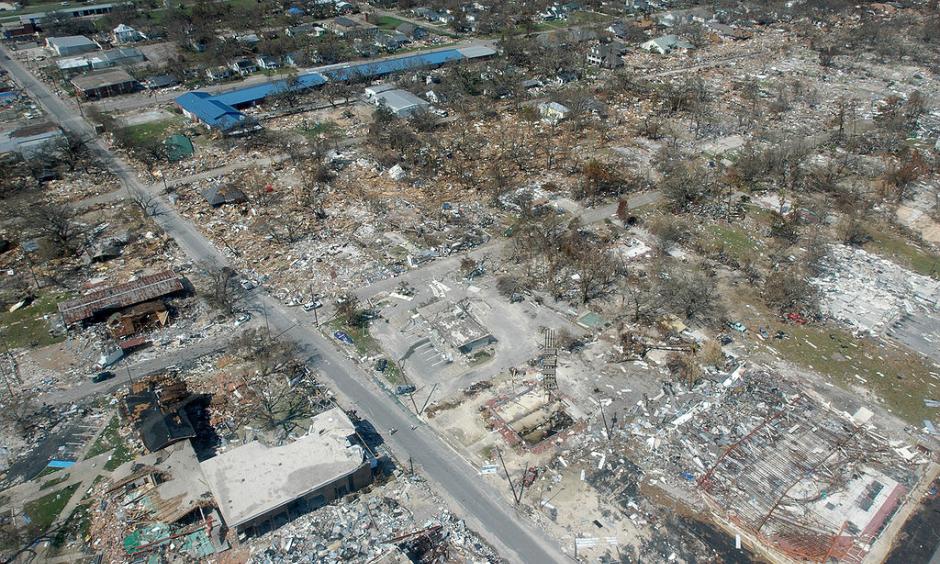
Hurricane Katrina slams into Gulf Coast
Hurricane Katrina makes landfall near New Orleans, Louisiana, as a Category 4 hurricane on August 29, 2005. Despite being only the third most powerful storm of the 2005 hurricane season, Katrina was among the worst natural disasters in the history of the United States. In the wake of the storm, there were over 50 failures of the levees and flood walls surrounding New Orleans and its suburbs. The levee and flood wall failures caused widespread flooding.
After briefly coming ashore in southern Florida on August 25 as a Category 1 hurricane, Katrina gained strength before slamming into the Gulf Coast on August 29. In addition to bringing devastation to the New Orleans area, the hurricane caused damage along the coasts of Mississippi and Alabama, as well as other parts of Louisiana.
New Orleans Mayor Ray Nagin ordered a mandatory evacuation of the city on August 28, when Katrina briefly achieved Category 5 status and the National Weather Service predicted “devastating” damage to the area. But an estimated 150,000 people, who either did not want to or did not have the resources to leave, ignored the order and stayed behind. The storm brought sustained winds of 145 miles per hour, which cut power lines and destroyed homes, even turning cars into projectile missiles. Katrina caused record storm surges all along the Mississippi Gulf Coast.
The surges overwhelmed the levees that protected New Orleans, located at six feet below sea level, from Lake Pontchartrain and the Mississippi River. Soon, 80 percent of the city was flooded up to the rooftops of many homes and small buildings.
Tens of thousands of people sought shelter in the New Orleans Convention Center and the Louisiana Superdome. The situation in both places quickly deteriorated, as food and water ran low and conditions became unsanitary. Frustration mounted as it took up to two days for a full-scale relief effort to begin. In the meantime, the stranded residents suffered from heat, hunger, and a lack of medical care.
Reports of looting, rape, and even murder began to surface. As news networks broadcast scenes from the devastated city to the world, it became obvious that a vast majority of the victims were African-American and poor, leading to difficult questions among the public about the state of racial equality in the United States. The federal government and President George W. Bush were roundly criticized for what was perceived as their slow response to the disaster. The head of the Federal Emergency Management Agency (FEMA), Michael Brown, resigned amid the ensuing controversy.
Finally, on September 1, the tens of thousands of people staying in the damaged Superdome and Convention Center begin to be moved to the Astrodome in Houston, Texas, and another mandatory evacuation order was issued for the city. The next day, military convoys arrived with supplies and the National Guard was brought in to bring a halt to lawlessness. Efforts began to collect and identify corpses. On September 6, eight days after the hurricane, the Army Corps of Engineers finally completed temporary repairs to the three major holes in New Orleans’ levee system and were able to begin pumping water out of the city.
In all, it is believed that the hurricane caused more than 1,300 deaths and up to $150 billion in damages to both private property and public infrastructure. It is estimated that only about $40 billion of that number will be covered by insurance. One million people were displaced by the disaster, a phenomenon unseen in the United States since the Great Depression. Four hundred thousand people lost their jobs as a result of the disaster. Offers of international aid poured in from around the world, even from poor countries like Bangladesh and Sri Lanka. Private donations from U.S. citizens alone approached $600 million.
The storm also set off 36 tornadoes in Mississippi, Alabama, Georgia, Pennsylvania, and Virginia, resulting in one death.
President Bush declared September 16 a national day of remembrance for the victims of Hurricane Katrina.
In a 2006 federal report, the U.S. Army Corps of Engineers admitted that the flood-control complex surrounding New Orleans had been incomplete, insufficient and improperly maintained. "The hurricane protection system in New Orleans and southeast Louisiana was a system in name only," said the report.

VIETNAM WAR
1970
Thousands of Mexican-American antiwar activists march in Chicano Moratorium
On August 29, 1970, more than 20,000 Mexican-Americans march through East Los Angeles to protest the Vietnam War. The Chicano Moratorium, as this massive protest was known, was peaceful until the Los Angeles Police entered Laguna Park.

ART, LITERATURE, AND FILM HISTORY
1958
Michael Jackson is born
Pop sensation Michael Jackson is born on August 29, 1958, in Gary, Indiana. Jackson began performing with his four brothers in the pop group the Jackson 5 when he was a child. The group scored its first No. 1 single in 1969, with “I Want You Back.”
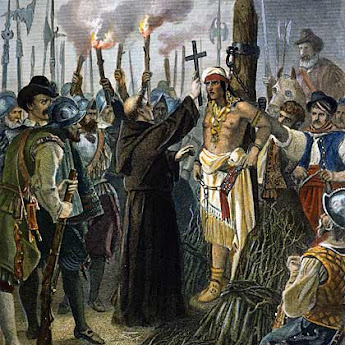
ANCIENT AMERICAS
1533
Pizarro executes last Inca emperor
Atahuallpa, the 13th and last emperor of the Incas, dies by strangulation at the hands of Francisco Pizarro’s Spanish conquistadors. The execution of Atahuallpa, the last free reigning emperor, marked the end of 300 years of Inca civilization.
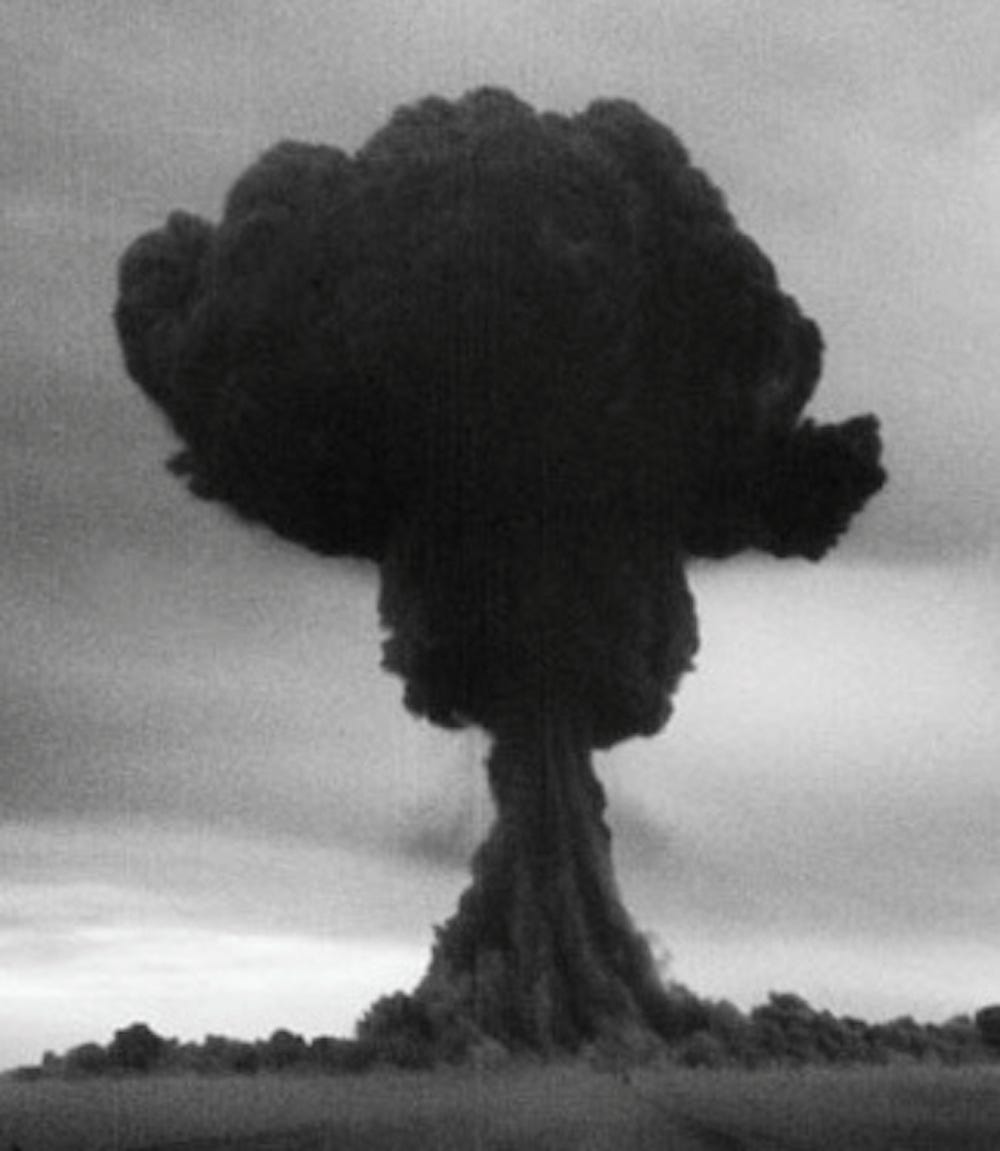
COLD WAR
1949
Soviets explode atomic bomb
At a remote test site at Semipalatinsk in Kazakhstan, the USSR successfully detonates its first atomic bomb, code name “First Lightning.” In order to measure the effects of the blast, the Soviet scientists constructed buildings, bridges, and other civilian structures.
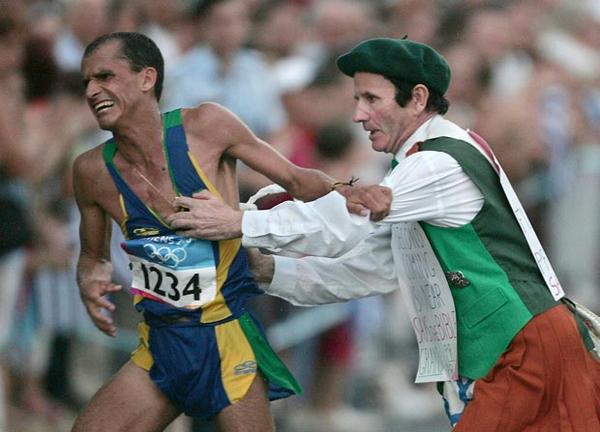
SPORTS
2004
Brazilian marathoner assaulted at Olympics
On August 29, 2004, Brazilian distance runner Vanderlei de Lima is attacked by a spectator while running the marathon, the final event of the Summer Olympics in Athens, Greece. At the time of the incident, De Lima had a 30-second lead in the race with four miles to go.
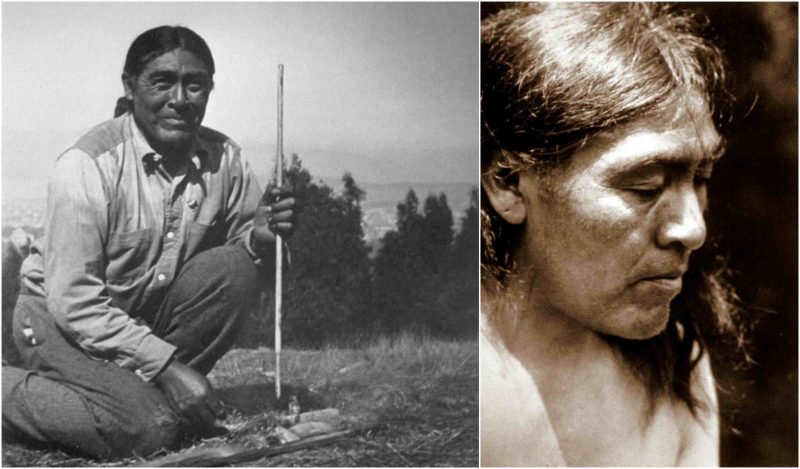
WESTWARD EXPANSION
1911
Ishi discovered in California
Ishi, who was described as the last surviving member of the Native Amercain Yahi tribe, is discovered in California on August 29, 1911. By the first decade of the 20th century, Euro-Americans had so overwhelmed the North American continent that scarcely any Native Americans remained who had not been assimilated into Anglo society to some degree. Ishi appears to have been something of an exception

ART, LITERATURE, AND FILM HISTORY
1982
Actress Ingrid Bergman dies on her birthday
On August 29, 1982, the Swedish-born actress and three-time Academy Award winner Ingrid Bergman dies of cancer on her 67th birthday. Bergman, who was best known for her role as Ilsa Lund in Casablanca, created an international scandal in 1950 when she had a son with the Italian husband.

NATURAL DISASTERS & ENVIRONMENT
1960
Hurricane Donna is born
On August 29, 1960, the storm that would become Hurricane Donna forms near Cape Verde off the African coast. It would go on to cause 150 deaths from Puerto Rico to New England over the next two weeks.

CRIME
2007
Hero security guard wrongly accused as bombing suspect dies
Richard Jewell, the hero security guard turned Olympic bombing suspect, dies at age 44 of natural causes at his Georgia home. On July 27, 1996, during the Summer Games in Atlanta, a pipe bomb with nails went off in crowded Centennial Olympic Park, killing one woman and injuring others.

CIVIL WAR
1862
North and South clash at the Second Battle of Bull Run
Confederate General Robert E. Lee deals a stinging defeat to Union General John Pope at the Second Battle of Bull Run, Virginia—a battle that arose out of the failure of Union General George McClellan’s Peninsular campaign earlier in the summer.
INVENTIONS & SCIENCE
1876
Charles F. Kettering, inventor of electric self-starter, is born
Charles Franklin Kettering, the American engineer and longtime director of research for General Motors Corp. (GM), is born on August 29, 1876, in Loudonville, Ohio. Of the 140 patents Kettering obtained over the course of his lifetime, perhaps the most notable was his electric self-starter.

WORLD WAR I
1914
Women join British war effort
On August 29, 1914, with World War I approaching the end of its first month, the Women’s Defense Relief Corps is formed in Britain. Though women’s rights organizations in Britain had initially opposed the country’s entrance into the First World War.

Comments
Post a Comment